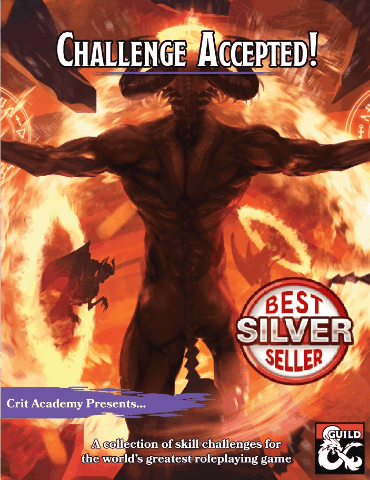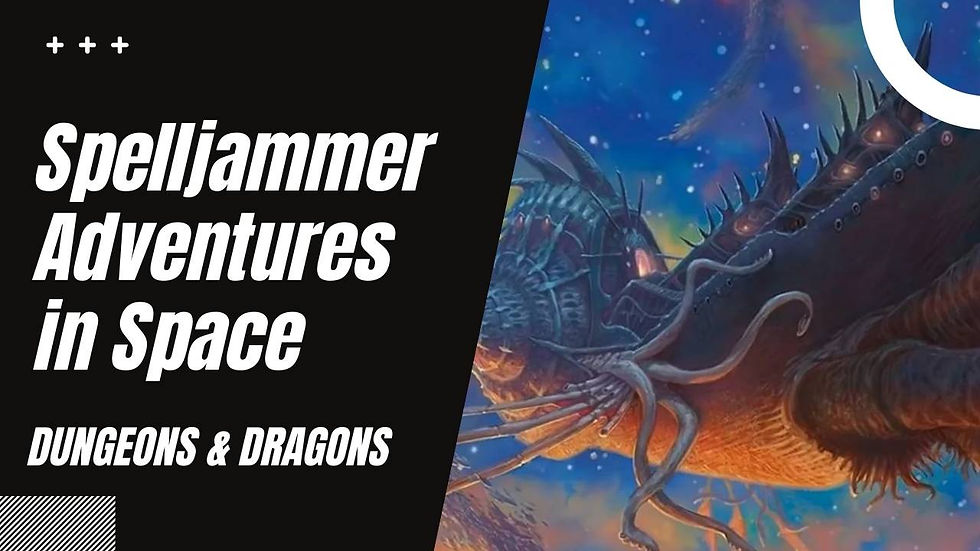Villains and Lairs | w/Jeff Stevens
- Justin Handlin

- Feb 8, 2021
- 5 min read
Crit Academy is joined by best-selling Dmsguild author, Jeff Stevens. In this episode, we discuss one of my favorite Dungeon Master resources, Villains and Lairs.
Expand your Dungeons and Dragons game with this collection of 56 NPCs of various Challenge Ratings, thirteen of which include maps and details of their lairs. Add these NPCs as a side-quest, a main villain, a one-shot, a bounty for easy money, or however else you wish.
Written by some of the best-selling authors on the Dungeon Masters Guild and outstanding podcasters, each NPC includes an image, a backstory, motives, flaws, and a stat block. Some even include new magic items!
This product is a piece of golden art. The collection of villains are interesting, well developed, and you're given options to introduce them not only as big bads but also as quest givers or just information givers. Giving you great NPC's for your world with fleshed out backgrounds and some with maps for their lairs. A must-have resource for any DM. Give a watch as we discuss some of our favorites in the book and the fantastic process to give this product life.
Character Concept:
Lost Artifact: (The Great Big Random d100 Table of NPCs by Aurican’s Lair)
As a youth, their village was attacked by adventurers who stole several heirlooms of dire importance to their tribe's ancestor worship. Without the ancestral spirits to guide the tribe, they quickly fell on harsh times and were plagued by disaster after disaster. Thus, they left home to track down and rescue the artifacts to return safety and prosperity to their village. Most of the artifacts are carved bones of the remains of their ancestors. The tribe practices ritualistic cannibalism, consuming corpses of their kin, especially organs, to inherit their strengths. Feeding on the heart gives them courage, the brain gives them smarts, the liver gives them fortitude, etc. It is considered a great dishonor for a member of his tribe to be left to decay.
Monster Variant:
Umbra Strider
Origin: Saber-Toothed Tiger
New Features:
Cunning Action. On each of its turns, the strider can use a bonus action to take the Dash, Disengage, or Hide action.
Shadow Form. The strider can enter a hostile creature's space. The first time it enters a creature’s space on a turn, the creature must make a DC 14 Dexterity saving throw, taking 2(1d4) psychic damage on a failed save.
Relentless (Recharges after a Short or Long Rest). If the strider takes 10 damage or less that would reduce it to 0 hit points, it is reduced to 1 hit point instead.
Encounter:
The Delivery!
Our heroes have been tasked with delivering a special medicine, food, or some other mcguffin to a small village in a forest surrounded by swampland. This makes travel to and from the village extremely difficult. While the area is a breeding ground for dangerous monsters. The threat and reason most merchants won’t make the trek is the unstable terrain. The village is surrounded quicksand-like sludge pits, living vine and plant life that suffocate their prey.
This works best as a skill challenge.
Animal Handling/Survival/Stealth checks to navigate the treacherous terrain and avoid monsters.
Medicine/Nature checks to identify poisonous or killer plants.
Athletics and Con checks/save to drain player resources, either hit die, or adding exhaustion.
History checks to recall secrets of the area, safe paths, or alternate routes
You can really add the tension by setting a time limit.
If PCs fail too much, maybe someone of importance dies, maybe the medicine becomes less effective. They may still arrive at their destination, but at a cost.
Magic Item:
Flute of the Deep Mother(villains and lairs)
Wondrous Item, Rare (Requires Attunement)
The Flute of the Deep Mother is a magical instrument crafted by sahuagin priestesses. These flutes are gifted to tribe leaders as a symbol of strength. The flute is crafted with seafloor clay. It is always shaped in the form of a reptilian creature. The mouth of the reptile with a kissing gesture is the mouthpiece of the flute. The eyes of the reptile are hollow and part of the whistling mechanism of the flute.
In order to use the flute, the user must cover each eye hole with a finger and ‘kiss’(blow) the mouthpiece. Once attuned to the flute, the user can use the flute as an action to become invisible. The user remains invisible for as long as they keep playing the flute. The flute can only be heard underwater. There is a 30% chance its sound calls forth a shark if it is played under the sea.
Using the flute takes a toll for non-sahuagin. Every time the flute is used by a non-sahuagin, the user must succeed a DC 10 Constitution save to avoid a slow transformation into a sahuagin. Upon each failure, the user will start manifesting sahuagin physical traits and mannerisms. It is left to the DM to decide what features are changed and how fast the transformation is.
Dungeon Master Tip:
When a player rolls to determine if they have knowledge on a particular subject, make sure to spend a moment describing why they know that knowledge or where they may have learned it.
If a Ranger is easily able to identify a set of footprints that belong to a T-rex, consider adding something like “While tracking in the past with a friend, you stumbled across similar prints that he identified as belonging to a T-rex with a word of caution when you find them.”
Or if your Wizard makes a check to identify a particular rune. “In your studies in Waterdeep, you recall reading a particular scroll covering glyphs of warding. While it doesn’t look exactly the same, you’re definitely sure it almost an identical match.”
This is great for sharing a bit of the character's backstory, or adding to it.
For example, was the friend important? What happened to them?
Player Tip: Don’t be a Dick
Remember your concepts should lead to goals
Most characters from movies, books or comics can be summarized in a sentence or two. Often times the best ideas are simple, but they can set up interestingly complicated ramifications when that basic concept is translated into action.
As you create your character concept, try to focus on future goals. What good is your past, if it doesn’t affect your future? Include some aspect of your character's personal goals in that big picture.
For example: Our character concept the “Lost Artifact” gives enough info to let the DM that your searching for these artifacts, and that if found, you have to return them. Giving the DM a hook that they can use to engage you with.
Make sure to subscribe to our show at www.critacademy.com, and Youtube so we can help you on your future adventures as well as a chance to win cool prizes each and every week. Make sure to check out our fellowship members as well. Or support us on Patreon and get weekly Dungeons and Dragons loot!
















Comments